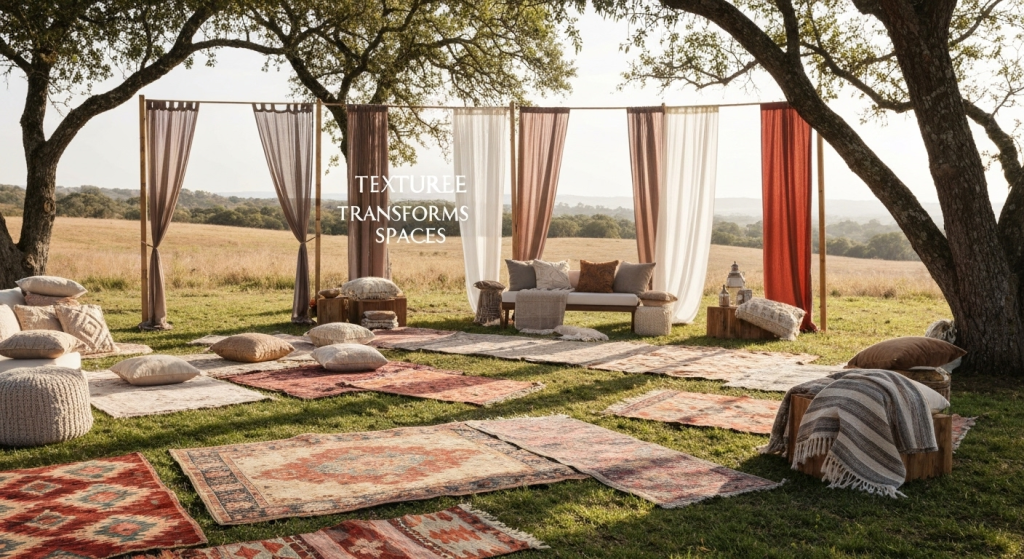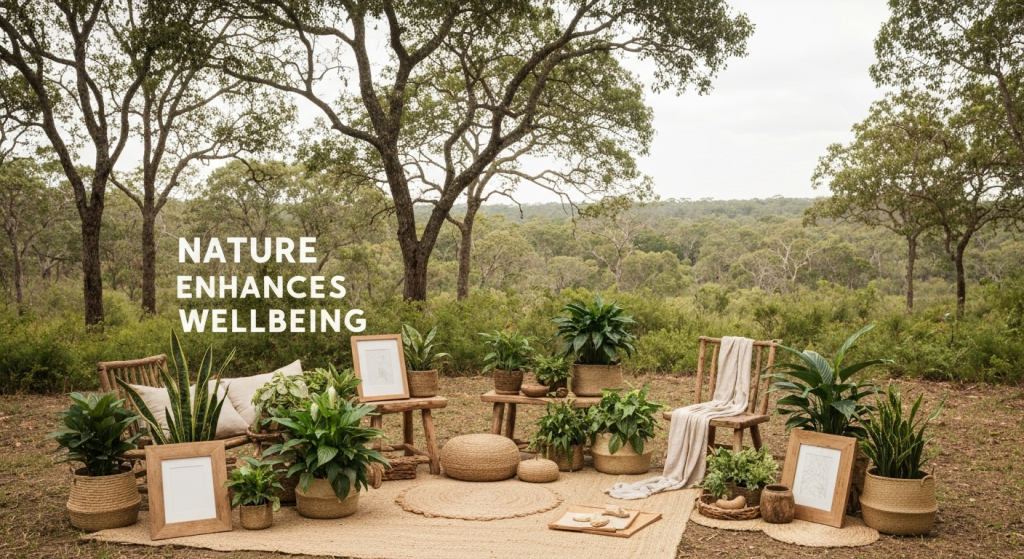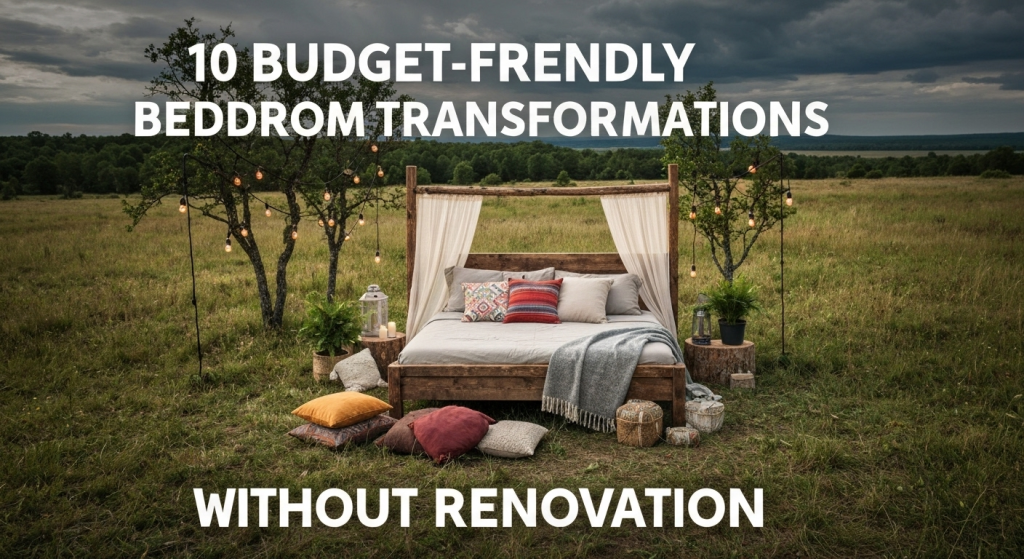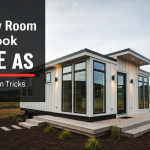Transforming your bedroom doesn’t require a contractor, months of construction, or thousands of dollars. Over my five years as an interior design consultant, I’ve helped countless homeowners create stunning bedroom makeovers using simple, affordable strategies that deliver maximum impact.
My name is Richard Boren, and I’ve been working in residential interior design since 2019. During this time, I’ve specialized in budget-conscious room transformations, helping families across the country reimagine their spaces without the stress and expense of full renovations. What I’ve learned is that the most dramatic changes often come from the smallest adjustments.
The bedroom transformation process focuses on five key elements: lighting, textiles, color, organization, and focal points. These elements work together to create atmosphere, functionality, and visual appeal. When you understand how to manipulate these components, you can completely change how your bedroom looks and feels.
Let’s explore ten proven methods that will revolutionize your bedroom space while keeping your budget intact.
1. Master the Art of Strategic Lighting

Poor lighting kills bedroom ambiance faster than anything else. Most bedrooms rely solely on harsh overhead fixtures that create an unwelcoming hospital-like atmosphere. The solution lies in layered lighting that serves multiple purposes.
Start with ambient lighting using warm-toned LED bulbs in table lamps or floor lamps. These create the foundation of your lighting scheme. Add task lighting with adjustable reading lights or pendant lights near your bed. Finally, incorporate accent lighting through string lights, candles, or small decorative lamps.
I recently worked with a client whose bedroom felt cold and uninviting. We replaced her single overhead light with three different light sources: bedside table lamps with warm bulbs, a floor lamp in the corner, and battery-operated LED strips behind her headboard. The transformation was immediate and dramatic.
Lighting Comparison Table
Lighting TypeCost RangeImpact LevelInstallation DifficultyLED String Lights$10-$25HighEasyTable Lamps$20-$80HighEasyFloor Lamps$30-$120MediumEasyWall Sconces$40-$100HighMediumSmart Bulbs$15-$50MediumEasy
The key is creating multiple light sources at different heights throughout the room. This eliminates harsh shadows and creates depth that makes the space feel larger and more inviting.
2. Transform Your Space with Textiles

Textiles are the fastest way to inject personality and comfort into any bedroom. The right combination of throw pillows, blankets, curtains, and rugs can completely change your room’s character within hours.
Focus on layering different textures rather than matching everything perfectly. Combine smooth cotton with chunky knits, velvet with linen, or faux fur with woven fabrics. This creates visual interest and makes the space feel more sophisticated.
Color coordination doesn’t mean everything has to match. Choose a color palette of three to four colors and distribute them throughout your textile choices. For example, if you choose navy, cream, and gold, use navy for curtains, cream for bedding, and gold for accent pillows.
Textile Impact Strategies
- Replace lightweight curtains with heavier panels that reach the floor
- Add a large area rug to define the sleeping space
- Layer multiple throw pillows in different sizes and textures
- Drape a cozy throw blanket across the foot of your bed
- Consider a textured bedspread or duvet cover as your foundation piece
Window treatments deserve special attention because they frame your room and control natural light. Full-length curtains hung close to the ceiling make windows appear larger and ceilings higher. Choose curtains that are 1.5 to 2 times wider than your window for a full, luxurious look.
3. Create Stunning Wall Transformations
Walls offer the largest canvas for transformation, and you don’t need paint or wallpaper to make dramatic changes. Removable wall decals, tapestries, and strategic artwork placement can completely alter your room’s personality.
Gallery walls work particularly well in bedrooms because they create a focal point that draws attention away from other areas you might want to downplay. The secret to successful gallery walls lies in planning your layout on the floor first, then transferring the arrangement to the wall.
During a recent project, I helped a college student transform her dorm room using only removable elements. We created a stunning accent wall using peel-and-stick wallpaper samples arranged in a geometric pattern. The total cost was under $30, and the visual impact was extraordinary.
Wall Transformation Options
MethodCostRemovabilityImpact LevelPeel-and-stick wallpaper$25-$60HighVery HighWall decals$15-$40HighMediumTapestries$20-$80HighHighGallery wall$30-$150MediumHighMirrors$25-$100MediumVery High
Mirrors deserve special mention because they serve double duty as wall decoration and space enhancers. A large mirror opposite a window reflects natural light throughout the room, making it feel brighter and more spacious.
4. Revolutionize Your Storage and Organization
Clutter is the enemy of bedroom tranquility. Even the most beautifully designed space feels chaotic when clothes pile up on chairs and personal items scatter across surfaces. Smart storage solutions can transform your bedroom’s functionality while improving its appearance.
Under-bed storage is often overlooked but offers tremendous potential. Storage boxes, rolling drawers, or vacuum-sealed bags can hide seasonal clothing, extra bedding, or rarely used items. This frees up closet space and reduces visual clutter.
Nightstand organization makes a significant impact on daily bedroom experience. Use small trays or containers to corral charging cables, jewelry, and daily essentials. A well-organized nightstand contributes to better sleep hygiene and morning routines.
Storage Solutions by Category
Clothing Storage:
- Over-door organizers for accessories
- Slim hangers to maximize closet space
- Drawer dividers for undergarments and socks
- Rolling carts for frequently used items
Personal Items:
- Bedside caddies for books and electronics
- Wall-mounted shelves for display and storage
- Storage ottomans that double as seating
- Decorative baskets for miscellaneous items
The key to successful bedroom organization lies in giving everything a designated home. When items have specific places, maintaining order becomes automatic rather than overwhelming.
5. Maximize Natural Elements and Greenery

Plants bring life, color, and improved air quality to bedroom spaces. Even if you don’t consider yourself plant-savvy, several low-maintenance options thrive in bedroom conditions and require minimal care.
Snake plants, pothos, and ZZ plants tolerate low light and infrequent watering, making them perfect for bedrooms. These plants also continue photosynthesis at night, potentially improving sleep quality by producing oxygen.
Natural wood elements add warmth and texture without requiring permanent changes. Wooden picture frames, decorative bowls, or small furniture pieces introduce organic shapes and colors that soften the overall aesthetic.
I once transformed a sterile-feeling bedroom by adding five different plants in varying heights and a few natural wood accessories. The space immediately felt more welcoming and alive. The client reported sleeping better and feeling more relaxed in the transformed environment.
Plant Selection Guide
Plant TypeLight NeedsWater FrequencyBedroom BenefitsSnake PlantLow to brightEvery 2-3 weeksAir purificationPothosLow to mediumWeeklyEasy maintenancePeace LilyLow to mediumWeeklyHumidity controlZZ PlantLowEvery 3-4 weeksDrought tolerantSpider PlantMediumWeeklyAir cleaning
Natural elements extend beyond plants to include natural fibers, stone accessories, and wood textures. These materials create a calming environment that promotes relaxation and better sleep.
6. Strategic Furniture Arrangement and Repurposing
Furniture placement dramatically affects how spacious and functional your bedroom feels. Most people push furniture against walls, but strategic placement can create better flow and more interesting visual compositions.
Try floating your bed away from the wall if space permits. This creates a more luxurious hotel-like feeling and allows for better access from both sides. If your room is small, consider angling furniture to create the illusion of more space.
Repurposing furniture from other areas of your home costs nothing but can solve storage and functionality problems. A dining chair becomes a clothes valet, a side table transforms into a nightstand, or a bookshelf serves as a room divider.
Furniture Arrangement Principles:
- Create clear pathways through the room
- Balance visual weight across different areas
- Leave breathing room around larger pieces
- Use furniture to define different zones within the space
One client had a long, narrow bedroom that felt awkward and cramped. We repositioned her dresser to act as a room divider, creating a separate dressing area. The bed moved to the center of the room, and suddenly the space felt twice as large and much more functional.
7. DIY Headboard Solutions

Headboards anchor the bed and serve as focal points, but store-bought options can be expensive and limiting. DIY headboards offer unlimited customization while staying within budget constraints.
Fabric-wrapped foam boards create upholstered headboards for under $50. Choose fabric that complements your color scheme and secure it with a staple gun. This approach allows you to change your headboard’s appearance by simply re-covering it with different fabric.
Wall-mounted shelves arranged horizontally behind your bed create both a headboard and storage solution. This works particularly well in small spaces where every square foot matters.
DIY Headboard Options
StyleMaterials NeededEstimated CostDifficulty LevelFabric-wrappedFoam board, fabric, staples$30-$50EasyReclaimed woodWood planks, mounting hardware$40-$80MediumGallery wallFrames, artwork, hardware$50-$100EasyFloating shelvesShelves, brackets, screws$35-$70Medium
The beauty of DIY headboards lies in their complete customization. You can create exactly what your space needs while expressing your personal style preferences.
8. Color Psychology and Mood Enhancement
Colors directly impact mood, sleep quality, and overall bedroom atmosphere. Understanding basic color psychology helps you choose combinations that support relaxation and rejuvenation.
Cool colors like blues, greens, and soft purples promote calmness and better sleep. Warm colors like soft yellows, peaches, and warm grays create cozy, inviting atmospheres. The key is choosing colors that make you feel peaceful rather than energized.
Accent colors should comprise no more than 20% of your color scheme. Use them strategically in pillows, artwork, or small decorative items. This creates visual interest without overwhelming the space.
Color Impact Guide
Calming Colors:
- Soft blues: Reduce blood pressure and heart rate
- Sage green: Promote balance and harmony
- Lavender: Encourage relaxation and sleep
- Warm gray: Create sophisticated neutrality
Energizing Accents:
- Coral: Add warmth without overwhelming
- Gold: Introduce luxury and sophistication
- Deep teal: Provide richness and depth
- Cream: Offer clean, fresh brightness
During my design work, I’ve noticed that bedrooms with cohesive color schemes feel more expensive and professionally designed, regardless of the actual budget invested.
9. Scent and Ambiance Creation
Scent powerfully influences mood and memory, making it a crucial but often overlooked element in bedroom transformation. The right fragrances can make your bedroom feel like a luxury spa or cozy retreat.
Essential oil diffusers offer the most control over scent intensity and variety. Lavender promotes relaxation, eucalyptus clears the mind, and vanilla creates warmth. Avoid overwhelming fragrances that might interfere with sleep.
Candles provide both scent and ambient lighting, but battery-operated versions eliminate fire hazards while offering the same visual appeal. Reed diffusers offer consistent, subtle fragrance without electricity or flames.
Scent Strategy Guidelines:
- Choose one primary scent per room
- Layer subtle fragrances rather than competing strong ones
- Consider scent associations with relaxation and comfort
- Avoid artificial fragrances that might cause headaches
Sound also contributes to bedroom ambiance. White noise machines, soft background music, or nature sounds can mask disruptive noises and create a more peaceful environment.
10. Personal Touches and Memory Integration
The most successful bedroom transformations reflect the inhabitant’s personality and life experiences. Personal touches make spaces feel authentic and emotionally satisfying rather than generic or sterile.
Display meaningful items strategically rather than cluttering surfaces. A small collection of favorite books, family photos in coordinating frames, or travel mementos can personalize the space without creating chaos.
Create designated display areas that can change seasonally or as your interests evolve. Floating shelves, shadow boxes, or small gallery walls accommodate personal items while maintaining visual organization.
Personal Touch Ideas:
- Frame meaningful quotes or lyrics
- Display a small collection of favorite objects
- Incorporate handmade items or gifts from loved ones
- Use photos in consistent frames for cohesive appearance
The goal is creating a space that feels uniquely yours while maintaining the calming, restful atmosphere essential for good sleep and relaxation.
Putting It All Together: Implementation Strategy
Bedroom transformation works best when approached systematically rather than randomly. Start with the changes that offer the biggest visual impact for the lowest investment, then build from there.
Begin with lighting improvements and textile additions, as these create immediate atmosphere changes. Next, address organization and storage to establish functionality. Finally, add personal touches and decorative elements that reflect your style.
Budget allocation should prioritize items you’ll use daily. Invest more in quality bedding and lighting, less in purely decorative accessories. This ensures your transformation improves both appearance and daily comfort.
Implementation Timeline:
- Week 1: Lighting and basic textiles
- Week 2: Organization and storage solutions
- Week 3: Wall treatments and color additions
- Week 4: Personal touches and final adjustments
Remember that transformation is an ongoing process. Start with foundational changes, then add elements gradually as budget and inspiration allow.
Frequently Asked Questions
What’s the most impactful single change I can make to my bedroom? Improving lighting creates the most dramatic transformation for the lowest cost. Replace harsh overhead lighting with multiple warm light sources to instantly change your room’s atmosphere.
How can I make a small bedroom feel larger without renovation? Use mirrors to reflect light, choose light colors for walls and textiles, keep furniture low to the ground, and minimize clutter. Vertical storage solutions maximize floor space while drawing the eye upward.
What’s the best way to choose a color scheme on a budget? Start with items you already own and build around them. Choose three colors maximum and use the 60-30-10 rule: 60% dominant neutral, 30% secondary color, 10% accent color.
How do I transform my bedroom if I’m renting and can’t paint walls? Focus on removable options like peel-and-stick wallpaper, large artwork, tapestries, or temporary wall decals. Textiles, lighting, and furniture arrangement create major impact without permanent changes.
Conclusion
Bedroom transformation doesn’t require massive budgets or months of construction. Through strategic use of lighting, textiles, organization, and personal touches, you can create a space that feels completely new while supporting better sleep and daily comfort.
The key lies in approaching transformation systematically, focusing on elements that provide maximum impact for minimum investment. Start with lighting and textiles, add organization solutions, then incorporate personal elements that make the space uniquely yours.
Your bedroom should be a sanctuary that reflects your personality while promoting rest and relaxation. These ten strategies provide the foundation for creating that perfect balance, regardless of your budget or current space constraints. The most successful transformations happen gradually, allowing you to adjust and refine as you discover what works best for your lifestyle and preferences.



